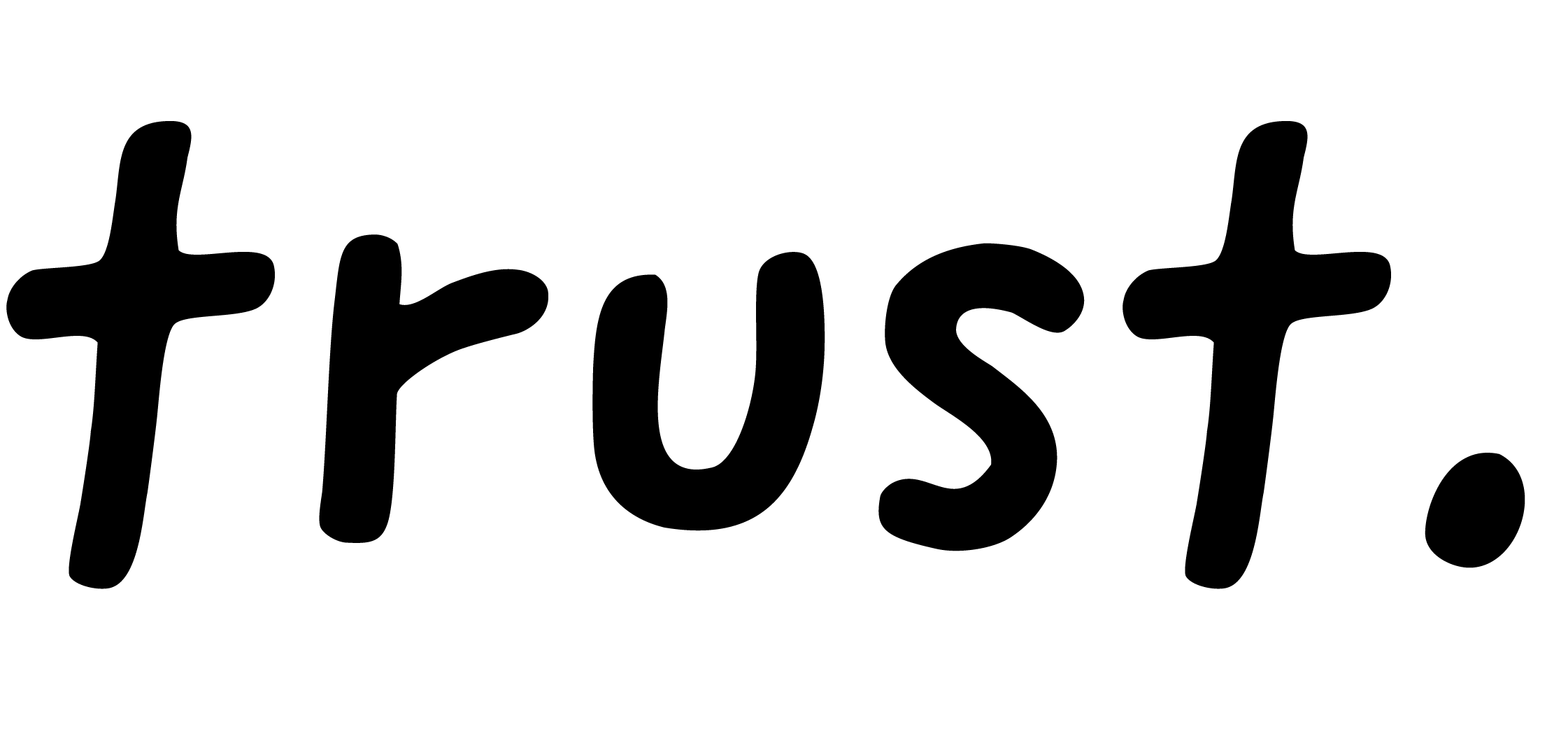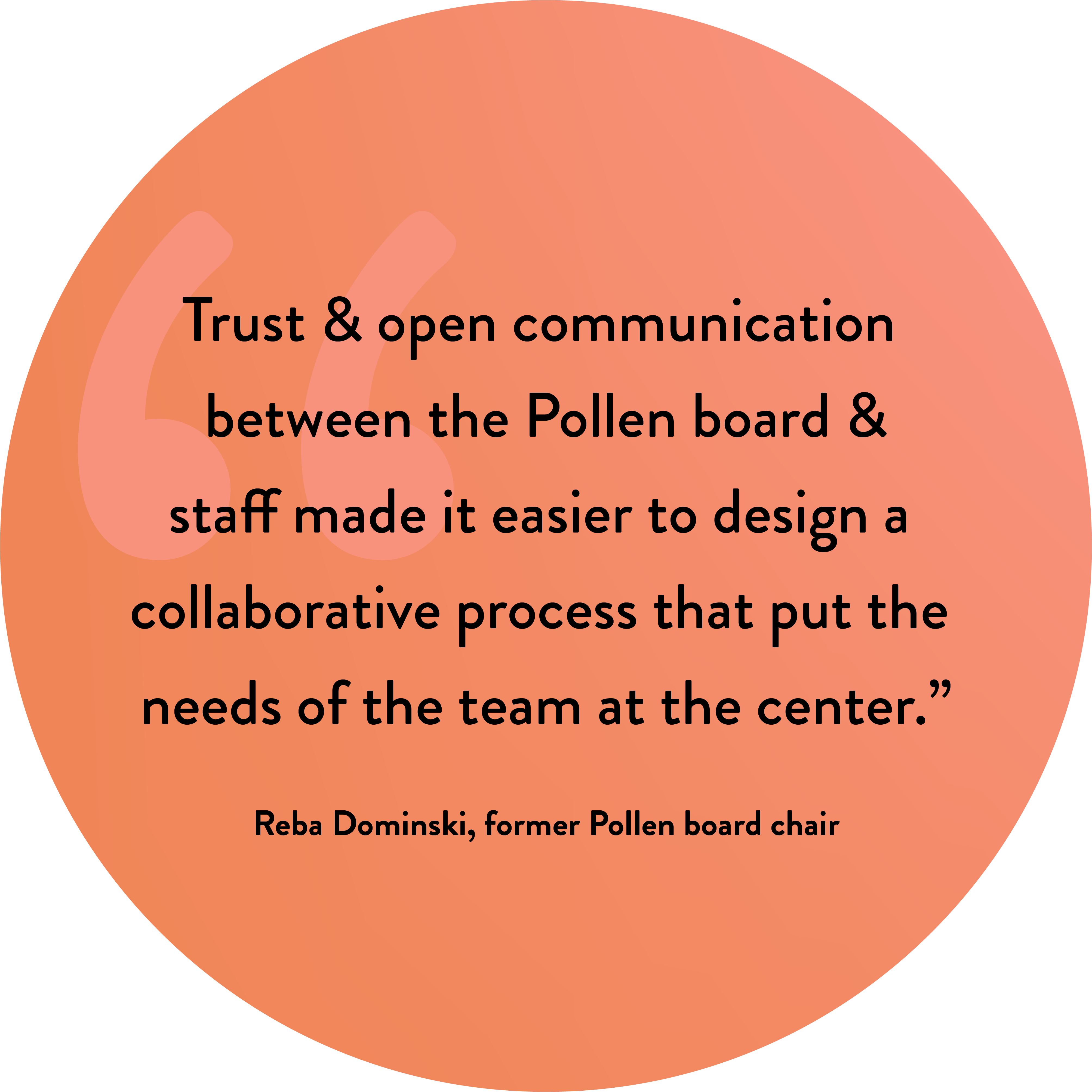
By: Jamie Millard
As Pollen continues through our Executive Director leadership transition (read about that here), every other week we will share more about our process, reflections, takeaways, and updates. “Bloom: Pollen’s Growth & Executive Director Transition Series” will candidly share how we’ve approached our process of executive leadership transition — a process that centers transparency, prevents harm, and is rooted in racial equity.
How the goal of building deep solidarity between staff and board became Pollen’s most important guiding principle in our executive director transition.
What would it mean to have an executive leadership transition with genuine collaboration between board and staff?
What would it look like to come out on the other side of that transition with the staff and board feeling more trusting of each other, more connected, more engaged?
As Pollen was gearing up to undergo our executive director transition, we started listening to peer organizations who had recently gone through their own leadership changes. One theme we heard over and over from the staff: an experience of disconnection.
- “I didn’t feel like my perspective mattered.”
- “I felt in the dark about what the board was thinking.”
- “Why wasn’t my input valued?”
Board members often also felt a sense of disconnection:
- “I didn’t always feel like I had enough information to make these decisions.”
- “I wanted to know what the staff wanted, but didn’t know if that was appropriate.”
Pollen determined early on that fostering trust between the staff and board would be a top priority through our executive director transition. Doing so would:
- Increase engagement, excitement, and value from the staff
- Deepen the board’s understanding and connection to the mission
- And ultimately, the staff and board working together in alignment would best set up the next executive director for success (which is a common theme you’ll see Pollen prioritize over and over)

Follow the power
To reimagine a process of deep collaboration between staff and board, our organization would need to have some introspective conversations about power:
How does power live within boards, bylaws, and decisions?
To address these questions is to begin to dismantle how it’s always been done. It requires a willingness to put all of our assumptions out in the open and pull the threads of curiosity.
In the beginning, Pollen struggled to move beyond the confines of the traditional decision-making power structure in a leadership transition. We were stuck in loops that sounded like:
- “Our bylaws say the board hires and fires the executive director. This is a board level only decision.”
- “Boards always lead this process. It’s done this way for a reason.”
We asked ourselves some important questions: “Who wrote these bylaws? Where did these ideas come from? And how do we free ourselves to imagine different ways to operate more closely within our values?”
We realized we had allowed ourselves to be penned in by the confines of the status quo—confines that bear some markings of white supremacy culture. Once we saw that clearly, we knew we had to open the door to other possibilities, but expanding our options meant finding a path that worked for everyone.

Building alignment
By the end of 2020, after a staff and board survey, it became clear for Pollen that we were not in complete alignment:
- Notes from that time after a board meeting: “Staff think they will lead the process with input from the board. The Board thinks they should lead the process with input from Staff. More conversation will be needed to develop a collaborative process. We will give this the time it needs and deserves in 2021.”
And so we did just that, because doing things differently takes time.
We hired Courageous Change Collective, a Minnesota-based consulting organization, to bring our staff and board through a collaborative process—and to begin our commitment towards trust building.

Key insights that surfaced from our work with Courageous Change Collective:
- Pollen staff and board really need to build this together, with more time dedicated to the process — more extended board meetings, or board liaisons joining staff meetings and reporting back to the full board. This process should not be rushed.
- Don’t just focus on where there is alignment. We need to lift up and work through the differences in perspective, particularly between the staff and board. Leaving these unattended will lead to more tension in the organization.
- This is not the first time that Pollen has undertaken this kind of change and transformation, where we have worked to center justice and liberation, nurture people as humans, and share power. We should focus on the wisdom of our collective narrative.
Action steps we took:
- In shaping every board meeting agenda, we asked “how can this conversation contribute towards growing trust between staff and board?”
- We formed a Leadership Expansion Working Group (4 staff members, 3 board members) that would meet monthly and co-design the transition process going forward.
- Staff and board members were welcomed to join and listen in at any time, but both groups (staff and board) would empower and trust this collaborative working group with shepherding the process and putting forward recommendations.
- We intentionally named this working group “Leadership Expansion” — and not “Succession Planning Committee.” It was important to signify that this transformation would be about expanding leadership throughout the entire organization, not just a focus on the Executive Director role. We’ll dig into the importance of this in a future post.

Do you have an executive leadership transition on the horizon?
Here are a few tips for an upcoming board meeting and/or staff meeting:
Discuss how trust currently manifests between staff and board. A few possible discussion questions:
- What does trust mean to the board members as individuals?
- What does trust mean to the staff as individuals?
- Where is there currently strong trust between these two bodies?
- Where are we in alignment?
- Where are we not in alignment?
- What would our working relationships look like with more trust? How might our collaborations evolve?
Talk about power.
- Does the board realize the inherent power they represent to staff?
- Does the staff realize their own power they hold in shaping priorities creating the context?
Collect ideas for fostering and building deeper trust over time between staff and board.
Read: “What Does an Equitable Executive Leadership Transition Look Like?” by Cyndi Suarez. This is a great primer for boards and staff to read in the beginning of an executive leadership transition.
“Best practice” is defined as “a procedure that has been shown by research and experience to produce optimal results and that is established or proposed as a standard suitable for widespread adoption.” But who determines best practice? And what are the relevant power relations?
What’s up next in “Bloom: Pollen’s Growth & Executive Director Transition Series”
On September 7 we’ll publish “Let’s Live Our Values”, which will focus on how we identified what matters most in our executive director transition. We’ll share tangible and practical examples of how strong values impacted our process.
